Yeongju, a city in South Korea, is famous as the historic home of the Seonbi, Confucian scholars who lived and studied during Korea’s Joseon period (1392-1897). At sites such as Sobaek Mountain, Buseoksa Temple, Sosu Seowon (the first educational institution in Yeongju), and Seonbichon Village, Yeongju’s historical and cultural traditions remain vibrant, attracting visitors in all four seasons.
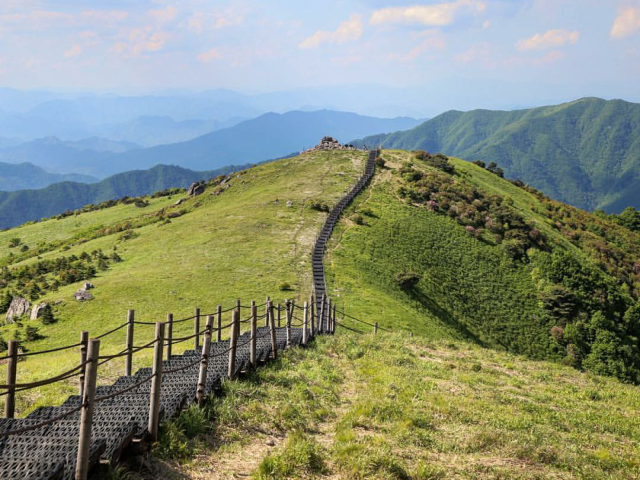
Sobaek Mountain.
Sobaek Mountain lies within Sobaeksan National Park. The mountain features a majestic ridge and grand vistas, as well as a beautiful valley with a dense forest. A number of historical monuments on Sobaek Mountain mark the former borders between the Three Kingdoms of Korea: Goguryeo, Baekje, and Silla. The trails that run throughout the Sobaek Mountain range are full of Buddhist temples and other elements of Seonbi culture.
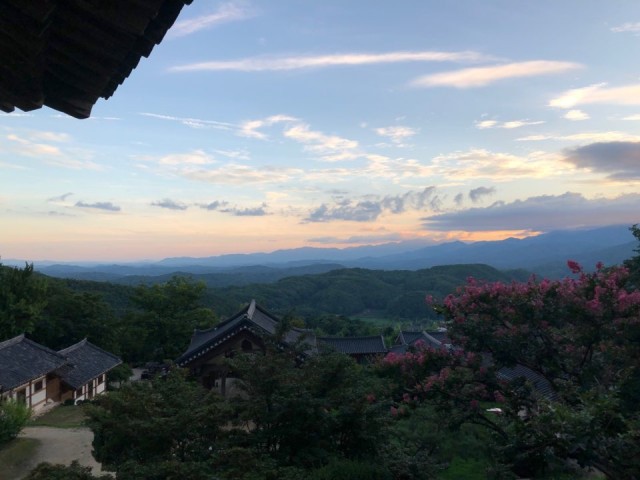
The landscape seen from Muryangsujeon.
One of the famous tourist attractions in Sobaeksan National Park is Buseoksa Temple. Founded in 676 CE by Great Monk Uisang upon the order of King Munmu of the Silla Kingdom, the temple remains active today. With more than 1,000 years of history, it was recognized as a UNESCO World Heritage Site in 1995 and contains many of South Korea’s national treasures such as Muryangsujeon hall, Stone Lanterns, Clay Seated Buddha, Stone Seated Buddha, Mural Paintings, and more. Its location also offers visitors magnificent views of the sunset and the surrounding countryside.
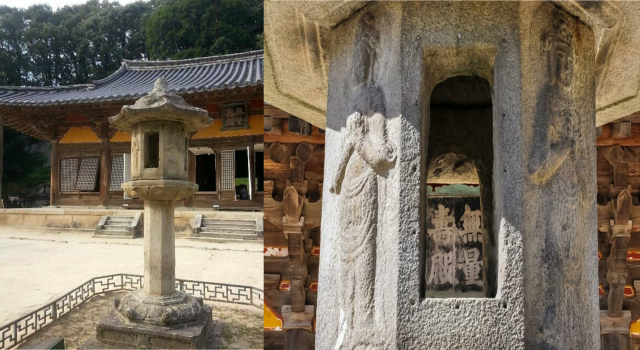
A stone lantern in front of the Muryangsujeon hall (left) at the Buseoksa Temple; Seen through another lantern, a wood plaque reads “Muryangsujeon (無量壽殿)” and welcomes all comers (right).
The founder of the Buseoksa Temple, Great Monk Uisang of Silla, also founded the Hwaeom (Flower Garland) School of Buddhism, and the temple has long been considered the center of Korean Hwaeom practice.
The main hall of the temple, Muryangsujeon, is a well-known example of traditional Korean architecture. Muryangsujeon is estimated to be one of the oldest wooden structures remaining in the country and a valuable part of the heritage of South Korea. The beautiful curved roof is a characteristic of the building. Inside Muryangsujeon is the famous Seated Clay Buddha Statue of Buseoksa, which symbolizes wisdom and eternal life.
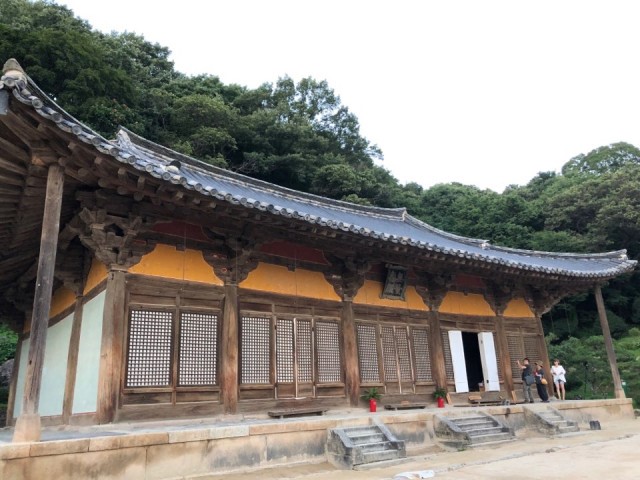
Muryangsujeon hall in Buseoksa Temple.
Nestled in the nearby foothills of Sobaek Mountain is Sosu Seowon, a Confucian academy. Sosu Seowon was the first of a number of private Confucian academies to be established across the country during the late Joseon dynasty.

Sosu Seowon.
Ju Se-Bung, a Confucian scholar and a country magistrate of Punggi, founded the academy under the name of Baekundong Seowon in 1542, in an attempt to create a more rationalist and secular form of Confucianism, called Neo-Confucianism. (Baekundong takes its name from the clouds that always flow around the valley.)
During the building of the academy, famine struck the region, and public sentiment turned strongly against its construction. Nonetheless, Ju Se-Bung pushed ahead with Seowon, because he believed that extending education was as important as alleviating hunger.
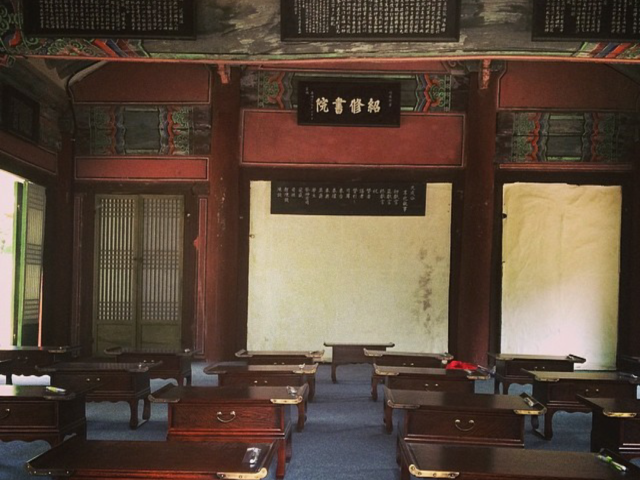
Ganghakdang in Sosu Seowon.
When entering Sosu Seowon, the first building that visitors encounter is Ganghakdang, a study hall. Confucian scholars used Ganghakdang to read the scriptures of Neo-Confucianism and hear lectures about Neo-Confucianist doctrine.
A shrine, Yeongjeonggag, stands beside Ganghakdang. Ganghakdang commemorates great scholars from the past, including a memorial tablet in honor of An Hyang, a progenitor of Neo-Confucianism who was one of founder Ju Se-bung’s heroes. The Yeongjeonggag shrine predates the Ganghakdang hall, making Sosu Seowon both a religious and an academic institution.
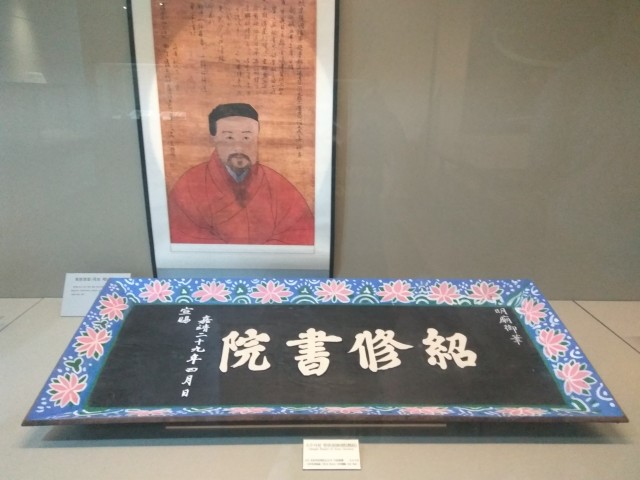
King Myeongjong’s handwritten plaque, renaming Baekundong Seowon “Sosu Seowon.”
Toegye Yi Hwang, a renowned Confucian scholar of the Joseon period, was Ju Se-bung’s successor at Baekundong Seowon. Seeing the national Confucian schools that provided local education as decadent and in decline, he hoped that Baekundong Seowon would provide a substitute and petitioned King Myeongjong for a royal charter. The king granted his request and renamed the institution Sosu Seowon, or “rebuilding the collapsed Confucianism.” In this way, Sosu Seowon became the first nationally authorized academy.
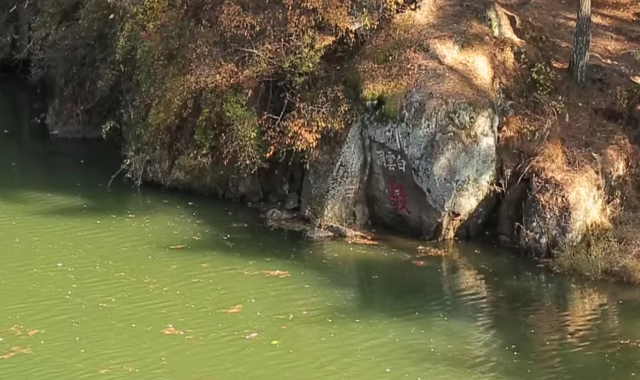
Gyeongja Rock in Jukgyecheon Stream.
To the east of Sosu Seowon, Jukgyecheon Stream flows from its origins at Sobaek Mountain. Jukgyecheon was a beloved stream for Confucian scholars who used to study in the surrounding area. On the bank of the stream is a stone, Gyeongja Rock, with a famous inscription. The red character, Gyeong (敬), which represents the first scholarly virtue of Neo-Confucianism, is said to have been carved by Ju Se-bung when he founded Sosu Seowon. The white characters, Baekundong (白雲洞), were inscribed by his successor, Toegye Yi Hwang.
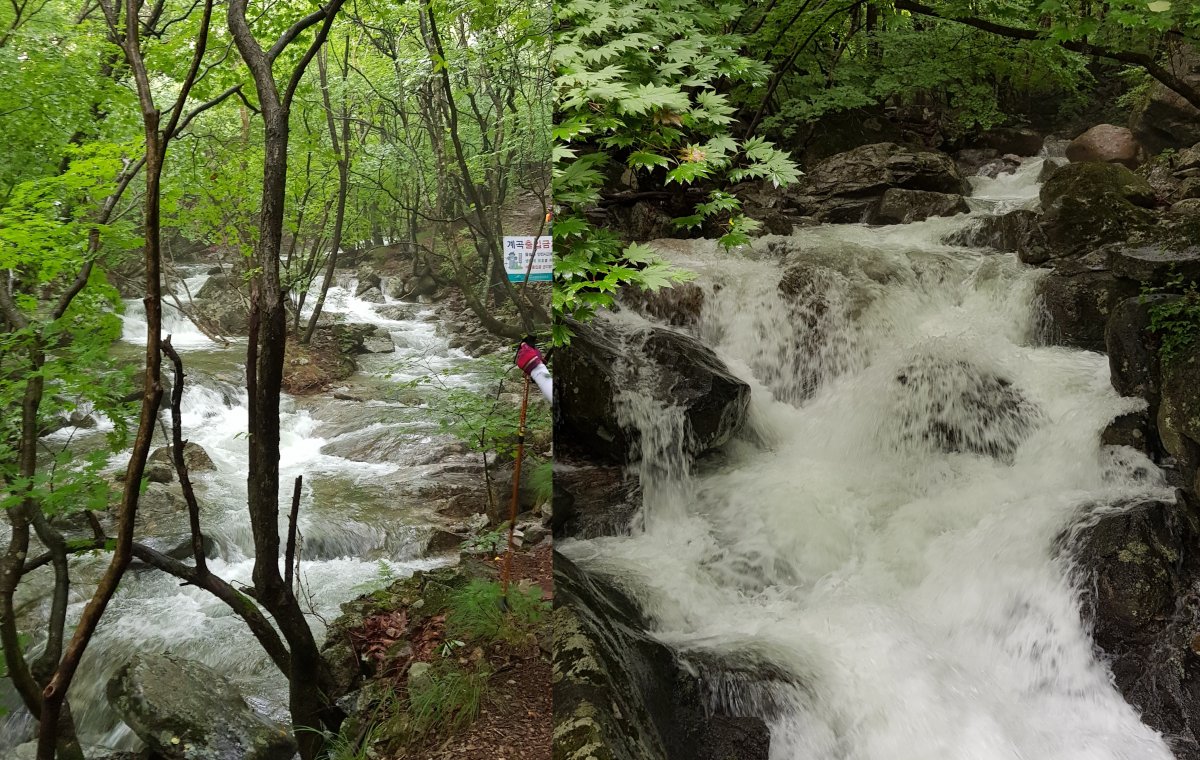
Jukgyegugok Valley and Stream.
Also nearby is Jukgyegugok Valley. The valley was named by Toegye Yi Hwang, who was inspired by the landscape and the sound of rushing water. The valley’s clear water, rocks, and pine and oak trees make for spectacular scenery.
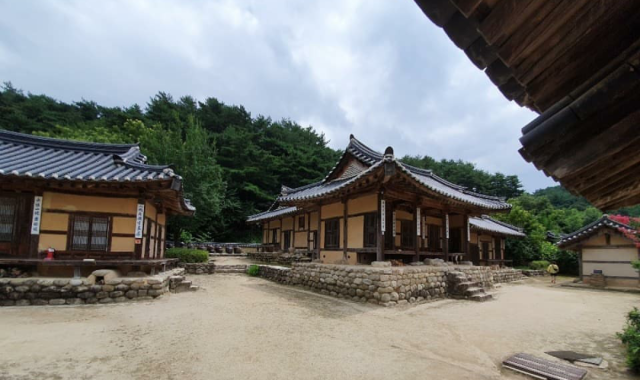
Seonbichon village.
Seonbichon village is the cradle of Korean Confucianism. The city of Yeongju reconstructed the village in 2004 based on the design of old houses still standing around Yeognju. They sought to preserve the spiritual and cultural heritage of classical scholars connected to Sosu Seowon. Visitors can experience traditional folk games and dining, and also participate in scholarly programs.
Walking through Sobaek Mountain, Buseoksa, Sosu Seowon, and Seonbicheon, it becomes clear that preserving cultural heritage sites means more than just protecting physical structures or cultural forms themselves. The full cultural heritage of Yeongju is embodied in the seamless interplay of its buildings, artifacts, stories, and stunning natural landscape, which allows people to experience Yeongju’s deep history first-hand.
[All images by author]
